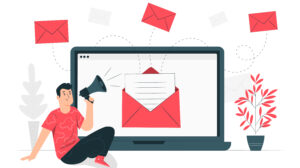Looking at the top rated apps today, there are a lot of connecting factors. They’re going to have well designed and modern interfaces. They’re going to be simple to use and practical. And most importantly, they’re going to be good at getting people to use their app and to come back. Let’s explore the best loyalty rewards apps below.
For certain types of apps, things like games, this is really simple to see. If an app is simply an addictive game, it only makes sense that people will have a hard time staying away. The real challenge is making someone return to a shopping app, or food app. It’s no longer enough to just provide a service, or even to do it well.
The top rated restaurant app today is Chick-fil-a. On some level this makes sense, it’s one of the most well liked fast food chains out there. Yet the Chick-fil-a app also does more than just sell food to willing customers. It provides a points system. This means that the more people buy, the more points they have. The more points someone has, the more free food they can start to buy.
Chick-fil-a’s system is particularly popular, but countless other food apps are repeating this trend. McDonalds will offer a free large fry to anyone who creates an account. Dominos has coupons which are exclusive to their apps. Chipotle has a similar points system to Chick-fil-a. The basic principle is clear, use the app, get a reward.
This is the basic principle driving some of the most popular apps today. Of course, there are better and worse ways to do this. Chick-fil-a bridges the gap by making it advantageous to the consumer and business. Although this line can be hard to manage at times. Shein, for example, is an online fashion retailer which has an extensive points system.
Customers earn points for logging in, for leaving reviews, for purchasing products, for playing minigames even. There is no shortage of ways to earn points. The issue is that the application of these points is much less direct. Instead of entire food items like at McDonalds, points may instead just lead to a very partial discount.
This issue is only made worse by flooded and overwhelming deals and front pages. Overwhelming the consumer, even with positive forces, can lead to negative reviews. Comparing Shein to Etsy really starts to reveal this issue. Etsy, while not as popular as Shein, has a much higher review rating.
Etsy accomplishes this with a much more clear interface, less predatory practices, and more direct communication. Sometimes the best way to keep a customer coming back is with a slightly less gamified experience. Another app which shows this off is the app for Sam’s Club. Sam’s Club is the top rated shopping app on Google Play, and for good reason. Sam’s Club doesn’t have a point system or anything which is overtly engaging, but it does have solid features.
The Scan and Go feature in particular makes the app a near necessity for many shoppers at the store. As the name implies, Scan and Go allows people using the app to scan and purchase products with their phone. A big issue with a lot of grocery stores and supermarkets is how long the process can take. This feature helps to alleviate this issue. Considering how impactful it is, it absolutely keeps people coming back to the app.
The final set of apps which will be discussed are Uber and Airbnb. These are both travel related apps which have one key similarity. They were created with the internet in mind. In terms of travel services, the biggest issue will always be when someone can’t get where they want to be. Regardless of the why, people hate to be stranded.
An important part of not being stranded today is having a really clear and direct digital service. If an airline’s app fails to update a boarding pass, this can lead to someone missing their flight. If a hotel app doesn’t give the customer enough information, they can miss their check in. Lyft and Airbnb are great at avoiding these issues because they were made with the internet in mind.
These two apps have incredibly clear interfaces, active updates, and use the app format to their advantage. These are features that other travel apps have historically had issues implementing. Today they are two of the top five rated travel apps on the App Store.
So how do businesses keep people coming back to their apps? Well it depends on the category. Food apps benefit from gamifying the process. Shopping apps benefit from uncluttered marketplaces and solid features. And travel apps benefit from prioritizing things going smoothly and clear communication. These are the factors that cause people to return to apps over time.





